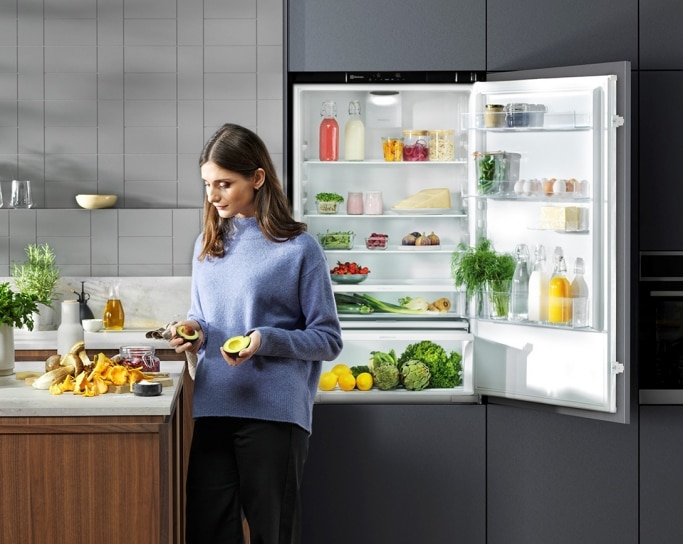
Highlights:
- 4.8 in consumer star rating
- Increased energy efficiency – up to 20% less CO2 emissions
- Over 80% of fridge materials recyclable
- 70% recycled plastic in the inner liner wall
Electrolux improves energy efficiency and increases consumer value in the built-in fridge freezer category. This is enabled by investments in product and process architecture at the Susegana plant, Italy.
Electrolux has a long history of continuously improving the energy efficiency of its appliances. With sustainability awareness becoming increasingly important for consumers, combined with the rising cost of energy, it’s a vital component of sustainable innovation. Recent EU regulations regarding rescaled and stringent energy labels have further raised Electrolux ambitions to increase market penetration for energy-efficient products and reduce CO2 impact.
Efficient and flexible manufacturing process
The Susegana production facility is Electrolux state-of-the-art factory and has ‘zero waste to landfill’ certification. Electrolux has invested in two new assembly lines which are over 40% automated, granting production flexibility, stability, and top quality as well as improved cost efficiency.
Innovative consumer experiences
The new fridge freezer range fulfils key consumer expectations such as improved energy efficiency, more storage capacity, and low noise level. A key focus area in designing the new products has been to further protect food quality, preserve vitamins, and reduce food waste. In addition, the products are easier to install than previous models. The new range has been very well received by consumers with an average Consumer Star rating of 4.8 as of August 2022.
With the user phase responsible for in general 85% of an appliance’s CO2 footprint, the new range delivers up to 20% less CO2 emissions1 than the previous range. With the even more energy-efficient models to be launched in the coming years, up to 70% of CO2 emissions1 are expected to be reduced.
Electrolux is constantly looking at sustainability beyond official product energy requirements. Over 80% of the materials in the new fridges can be recycled2, making this range of cooling devices one of the most sustainable choices available. By forming key recycling partnerships, such as with Stena in Europe, Electrolux works collaboratively to unlock new possibilities for reducing material waste. The new Electrolux 700 Maxispace green zone is the first fridge to be made of 70% recycled plastic in the inner liner wall.
1 CO2 impact from materials, process, and usage. Energy impact compared to energy class F as evaluated by Universita’ Politecnica delle Marche.
2 Considering collected fridges for recycling in the EU.

